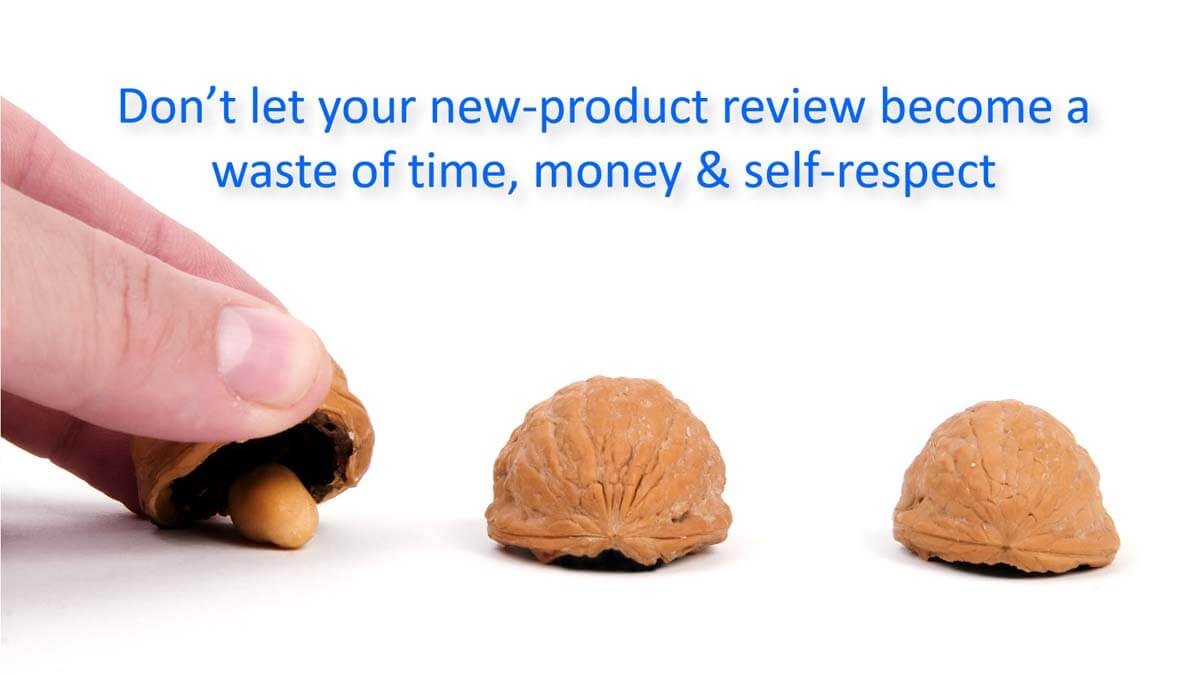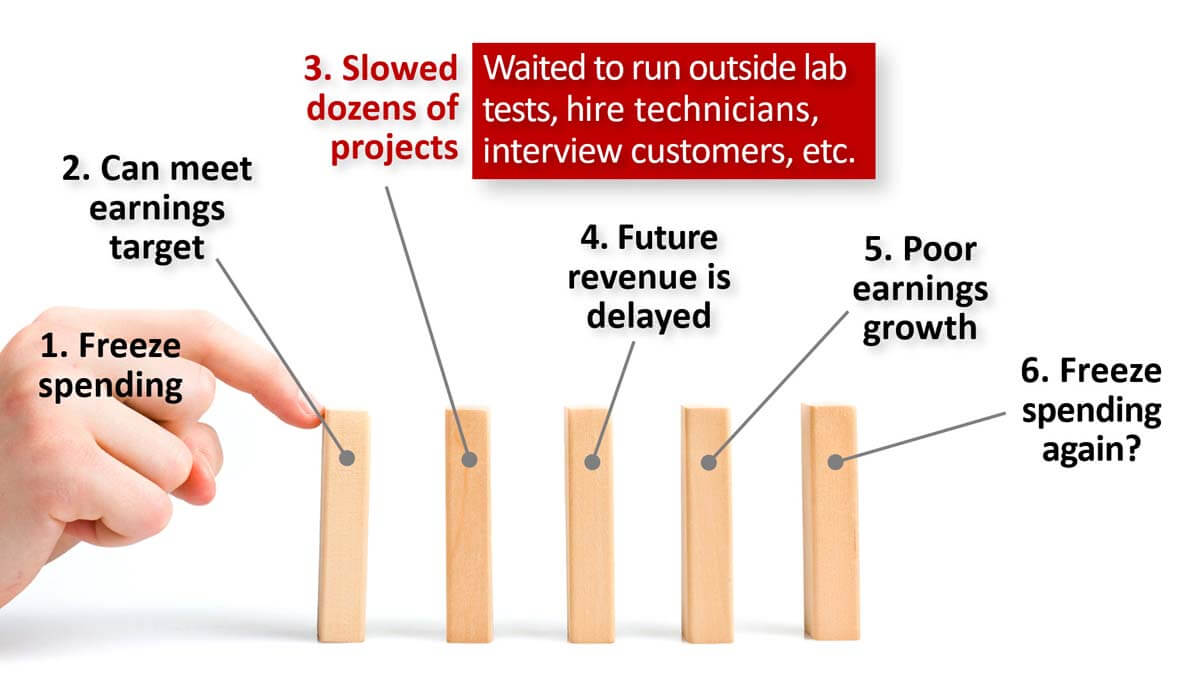When you consider B2B vs B2C, which market profession has greater advantages? Business schools offer more B2C courses, consumer research tools abound, and sophisticated marketers at B2C companies like Apple and P&G are held in high esteem. B2B marketers are often engineers or sales reps that were tapped on the shoulder and told to “do ... Read More
Blog Category: Organic Growth
If you’re paying attention, you can’t miss the Innovation Wave.
About 100 books on innovation are now written weekly… and 100 times as many articles on innovation are now published as in the 1970’s. So if you haven’t noticed, you might not be paying close attention. You know… like General Motors and Chrysler weren’t paying attention to Toyota and the Quality Wave in the 1970’s.
The good news is that your competitors may still be focused on initiatives other than whole-hearted, market-facing innovation. Like Toyota in the Quality Wave, you create a competitive advantage by moving faster and harder on this. More in 2-minute video, Catch the innovation wave.
More in white paper, Catch the Innovation Wave
Beyond the Vitality Index: Two Metrics to Truly Assess Innovation Potential
For over 30 years, companies have used the Vitality Index. But this metric has shortcomings addressed by two new metrics from The AIM Institute: 1) The Growth Driver Index (GDI) measures how you are building your growth capabilities. 2) The Commercial Confidence Index (CCI) assesses your commercial risk on new product development. ... Read More
Profitable, sustainable organic growth makes it fun to go to work.
When you can count on profitable, sustainable organic growth, everything gets better. Employees have stable, rewarding careers. Industry-watchers admire your company. Customers want to work with you. Activist investors bother someone else. And it irritates competitors. What’s not to love?
But you have only one path to this type of growth. You must understand and meet customer needs better than others. How intense is your focus here? Is it greater than that of your competitors’? Or is your business distracted by other initiatives that can never deliver rapid, profitable, sustainable growth?
More in 2-minute video, Rethink your major initiatives
B2B Innovation Leadership – 10 Best Practices
B2B innovation leadership is more than stoplight charts and cost-cutting. To make a real difference a B2b leader will usher in a new era of customer-driven growth. It takes patience, courage, and a commitment to finding the best people and processes. Follow these 10 best practices to lead innovation and change for B2B organic growth. ... Read More
It’s Time for New Innovation Metrics
You’ve heard, “measure twice, cut once,” right? When it comes to market-facing innovation, most companies only measure after they’ve cut. They use the vitality index—a fine innovation metric developed by 3M in 1988 that’s simple to understand: percentage of gross revenue generated from products launched in the past three (or five) years. But if this ... Read More
Let’s stop the shell games at project reviews.
My golden rule of investment is, “Make your decision when you’ve gathered the most facts and spent the least money.” If you do it right, this point in time is the gate just before the costly development stage. Most companies are far too casual here, letting each team build and present its own unique PowerPoint slides. Human nature says teams will use these slides to talk about their project’s strong points, avoiding weak areas.
So management tries to guess what’s missing: “What about the competition? Are there more technical risks? Is the problem this? Is it something else?” This shell game is waste of time, money and self-respect. Better to have a standard business case everyone works from. Here’s a sample of an abbreviated business case called a Market Case: www.marketcasesample.com
More in 2-minute video, Build a front-end business case
Have you separated your “farm animals” from your “jungle animals”?
If you ran a zoo, you’d keep your jungle animals and farm animals in separate enclosures, right? Your technology development projects are untamed, jungle animals: You don’t completely understand them, and you’re not sure what they’ll do or where they’ll go next. Your product development projects are predictable farm animals. You know what they’re supposed to do, and who they’re supposed to do it for.
When you commercialize technology, you are “domesticating” wild animals for productive purposes. As a first step, you must be crystal clear which type of project your scientists or engineers are working on at any point in time. Remember, technology development turns money into knowledge; product development turns knowledge back into money. You can learn more from this white paper, Commercialize technology in 6 foolproof steps.
More in this 2-minute video, How to pursue transformational projects
Your Surest Path to B2B Competitive Advantage
Consider this logic chain for growth: A) Your only path to profitable, sustainable growth in in creating customer value. B) The only way to create customer value is by improving important, unmet customer outcomes. C) Most companies do a poor job today of identifying which customer outcomes to improve. D) Proven methods are now available to confidently target a market’s important, unmet outcomes. ... Read More
The Inputs to Innovation for B2B
More than anything else, short time horizons restrain B2B organic growth. And this leads to “internal friction” in your growth machine, specifically in 4 areas: 1) available time, 2) required skills, 3) team motivation, and 4) organizational disruptions. ... Read More
4 Symptoms of Poor Portfolio Management for Innovation
Portfolio management links strategy with execution for new product development. A Voice of the Customer program maximizes ROI for all new product initiatives, whether incremental or breakthrough. ... Read More
Business Case Excellence: The 12 Key Components
We’ll examine 12 parts of a B2B business case format used by more than a thousand new-product teams. Our research will show you which sections are the most critical… including the part teams bungle most often. Do 12 parts seem like too many? We’ll close with a sensible business case “short-cut,” the 6-part market case. This ... Read More
Have your observed first-domino fixation and first-domino amnesia?
When you change a system, you always have a second-order effect. You can’t tip just one domino. Freeze discretionary spending this quarter and you’ll slow dozens of projects, as teams wait to run outside lab tests, hire technicians, interview customers, etc. Product launches are pushed back, delaying future growth. Otherwise-bright business leaders suffer from first-domino fixation over and over.
And most don’t learn from it. How often have you heard, “Well, our growth problem is all those crazy spending freezes the last few years”? Never? Yeah, that’s what I thought. I call this first-domino amnesia.
More in 2-minute video, Avoid the pitfalls of 2nd order effects
Have you ever experienced the Commodity Death Spiral?
Here’s how the Commodity Death Spiral works: First, you stop innovating and offer me-too products that are interchangeable with competitors’. This lets purchasing agents demand lower pricing, which lowers your profits. Now it’s budgeting time and your boss wants higher—not lower—profits, so you must reduce costs. You cut R&D and marketing since you don’t need them this year. Of course, you’ll have even less new product development capability next year.
Eventually, you reach the point of no return, and your business dies… or goes on “life support” and is no longer relevant. Sadly, many businesses are on this downward spiral right now, and either don’t know it, or don’t want to admit it. They need a wake-up call, or the employees in that business will suffer.
More in this 2-minute video, Avoid the commodity death spiral













